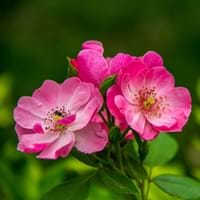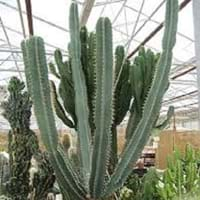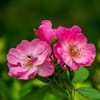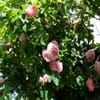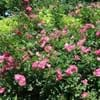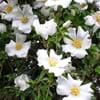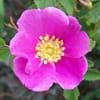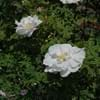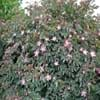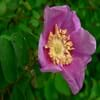What is
Life Span
Perennial
Perennial
Type
Flowering Plants
Cactus or Succulent
Origin
Europe, India, Northwestern Africa, United States, Western Asia
South America, Brazil
Types
Not Available
not available
Number of Varieties
Not Available
0
99+
Habitat
disturbed sites, Roadsides, stream banks, Woods
Rocky areas, rocky outcrops, Sandy areas
USDA Hardiness Zone
Not Available
10-15
AHS Heat Zone
Not Available
12-10
Sunset Zone
Not Available
H2, 13, 21, 22, 23, 24
Habit
Upright/Erect
Upright/Erect
Information
Plant Size
Minimum Height
300.00 cm
99+
760.00 cm
99+
Minimum Width
200.00 cm
99+
300.00 cm
99+
Plant Color
Flower Color
Lavender, Light Pink, Pink, Purple, White
White
Flower Color Modifier
Bicolor
Not Available
Fruit Color
Non Fruiting Plant
Red, Violet
Leaf Color in Spring
Green, Gray Green, Dark Green
Not Available
Leaf Color in Summer
Green
Not Available
Leaf Color in Fall
Green, Gray Green, Dark Green
Not Available
Leaf Color in Winter
Green, Dark Green
Not Available
Shape
Leaf Shape
Pinnate
Succulent
Thorns
Yes
Yes
Season
Plant Season
Spring, Summer
Spring, Summer, Fall, Winter
Growing Conditions
Sunlight
Partial shade, Partial Sun
Full Sun
Growth Rate
Medium
Fast
Type of Soil
Clay, Loam
Loam, Sand
The pH of Soil
Alkaline
Acidic, Neutral, Alkaline
Soil Drainage
Well drained
Well drained
Bloom Time
Spring, Summer
Early Summer
Repeat Bloomer
Yes
No
Tolerances
Wet Site
Drought
Care
Where to Plant?
Container, Ground, Pot
Container, Ground, Pot
How to Plant?
Seedlings, Stem Planting
Cuttings, Seedlings, Vegetative
Plant Maintenance
Medium
Medium
Watering Plants
Watering Requirements
Keep the ground moist but not water-logged
Needs less watering
In Summer
Lots of watering
Regular watering required
In Spring
Moderate
Moderate
In Winter
Average Water
Average Water
Soil
Soil pH
Alkaline
Acidic, Neutral, Alkaline
Soil Type
Clay, Loam
Loam, Sand
Soil Drainage Capacity
Well drained
Well drained
Sun Exposure
Partial shade, Partial Sun
Full Sun
Pruning
cut main flower spike, Remove dead branches, Remove dead or diseased plant parts
Remove damaged leaves, Remove dead branches, Remove dead leaves
Fertilizers
Apply 10-10-10 amount, as it is a flowering plant, use high phosphorous content fertilizer
All-Purpose Liquid Fertilizer, No fertilizers needed
Pests and Diseases
Grasshoppers
Not Available
Plant Tolerance
Drought, Wet Site
Drought
Facts
Flowers
Yes
Showy
Flower Petal Number
Single
Single
Fruits
Showy Fruit
No
Yes
Edible Fruit
No
Yes
Fragrance
Fragrant Flower
Yes
Yes
Fragrant Fruit
No
Yes
Fragrant Leaf
No
No
Fragrant Bark/Stem
No
No
Showy Foliage
No
No
Showy Bark
No
No
Foliage Texture
Medium
Bold
Foliage Sheen
Matte
Not Available
Evergreen
No
No
Invasive
No
No
Self-Sowing
No
No
Attracts
Birds, Small mammals
Birds, Fruit Bats, Moths, pollinators
Allergy
Constipation, Diarrhea, Headache, Heartburn, Nausea, Pain and fatigue, Stomach pain, Vomiting
Toxic
Benefits
Uses
Aesthetic Uses
Bonsai, Bouquets, Cottage Garden, Showy Purposes
along a porch, deck or patio, Beautification, Borders, Landscape Designing, Showy Purposes, small hedge, Used for decorating walls, fences, gates, hedges, etc.
Beauty Benefits
Good for skin, Skin Problems
Not Available
Edible Uses
Yes
Yes
Environmental Uses
Air purification, Food for birds
Food for birds
Plant Benefits
Medicinal Uses
Astringent, Diuretic, Laxative, Vitamin C
No Medicinal Use
Part of Plant Used
Flowers, Rose Hip
Fruits, Whole plant
Other Uses
Making Perfumes, Used as Ornamental plant, Used for its medicinal properties
Used as Ornamental plant, Used in construction, Used to feed livestock
Used As Indoor Plant
Yes
Showy
Used As Outdoor Plant
Yes
Yes
Garden Design
Feature Plant, Mixed Border
Container, Feature Plant, Houseplant, Landscape, Rock Garden, Showy Tree, Wall
Scientific Name
Botanical Name
Rosa Arkansana
CEREUS jamacaru
Common Name
Prairie Rose, Wild Prairie Rose
mandacaru, cardeiro, Night-blooming Cactus, Pleated Cereus
In Hindi
Rosa arkansana
mandacaru
In German
Rosa arkansana
Cereus jamacaru
In French
Rosa arkansana
Cereus jamacaru
In Spanish
Rosa arkansana
Cereus jamacaru
In Greek
Rosa arkansana
Mandacaru
In Portuguese
Rosa arkansana
Mandacaru
In Polish
Rosa arkansana
Mandacaru
In Latin
Rosa arkansana
Mandacaru
Classification
Kingdom
Plantae
Plantae
Phylum
Magnoliophyta
Tracheophyta
Class
Magnoliopsida
Magnoliopsida
Order
Rosales
Caryophyllales
Family
Rosaceae
Cactaceae
Genus
Rosa
Cereus
Clade
Angiosperms, Eudicots, Rosids
Angiosperms, Core eudicots, Eudicots
Tribe
Not Available
Careeae
Subfamily
Not Available
Cactoideae
Number of Species
Not Available
34
99+
|
||
|
||
|
